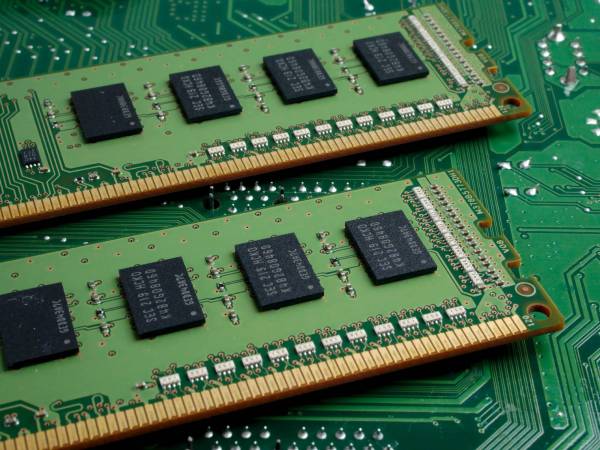

The state of our desks can say a lot about us. For some, a cluttered and messy work environment can lead to distraction and procrastination, while others claim disorder can encourage creative thought (the jury is still out on that one, though).
But maybe the real issue with desks isn’t the battle between the finicky creative process and ever-demanding productivity. With more gadgets than ever (and their respective chargers), and the challenge of living and working in the same space, the problem is just having enough room to get any work done at all.
Being tidy isn’t enough for the modern desk. We need a place for everything, and some key items will help you maximize your space, no matter how big it is.
Get a desk shelf
Back in the day, a standard desk came with a set of built-in drawers or, for the fancy folk, a set of pedestal drawers. But these storage units can be bulky, and with only about a third of workers having the luxury of a dedicated workspace in their home, you’ll likely need to get creative.
This is where the desk shelf comes in. It sits in the area under your monitor (or where it would be if you don’t use one), is about eight to ten inches deep, usually no more than five inches high, and can run the width of your entire desk. If you use a smaller monitor, you can place it on top of the shelf, whereas if you use a larger monitor or one with an ergonomic stand, you can find a desk shelf to fit under it. (This comes with the added benefit of covering up those awkwardly over-designed stands.) Both solutions provide not just a shelf for your knick-knacks and everyday items, but compartments below the shelf for you to slot things into.
[Related: Simplify your life with these shelf organizers for your desk]
A typical desk shelf isn’t closed in at the back, so your keyboard, mouse, and power cords can pass through it easily. Some designs don’t go under a monitor at all but sit to either side. They’re much more compact than a traditional bookshelf and usually have spaces perfectly sized for a handful of favorite books, gadgets such as your tablet, and laptop, and other items that usually clutter up your workspace.
Plenty of companies will sell you a beautifully crafted desk shelf in all kinds of exotic materials, or even just good, honest plywood. But building one yourself is simple even for a beginner.
By creating what is essentially a bunch of nooks for you to stash your stuff, the desk shelf will give your desktop structure. Your tablet and other devices will always be where they’re supposed to be now that they have a dedicated place.
Complement your space with ergonomic lighting
The fact your computer has a display that generates its own light is both a blessing and a curse. Sure, you can see what you’re doing on the screen, but that bright rectangle can end up giving you eye strain, not to mention it’s just not, you know, hygge.
But having a source of focused light near or behind your computer display can help reduce these issues. It’s called bias lighting, and its most basic job is to reduce the perceived brightness of your main display, reducing stress on your eyes.
But if bias lighting is not for you, you can go for a classic desk lamp. There are a virtually infinite number of LED lamps available on your favorite next-day-delivery shopping site, and most of them use essentially the same kind of temperature-adjustable LEDs. That means you’ll be able to set the light from a cool white down to a warmer, orangey yellow. Each one can affect your mood differently and has a particular role, with cold being more stimulating, and warm light being more welcoming. Adjust the light temperature throughout the day can help you wind up and down as you need it.
There are a few other features worth looking out for, too. Some lamps come with a built-in battery, so in the event of a blackout, you’ll have a light source that lasts a good ten to 12 hours. Some models can also communicate with other lamps of the same make or model via Bluetooth, which means you can switch them on or dim them all at once if you want. Often, these lamps also have a candlelight feature that will change the ambiance of any room by flickering the LED to simulate a candle flame. This works okay on a single lamp but it might be weird if you turn on this feature on multiple lamps at the same time, as the flickering tends to sync across multiple units.
As well as a desktop lamp, it’s also a good idea to get an ergonomic monitor lamp. Sometimes called a screen bar, this is a strip LED that goes across the top of your computer monitor (they’re usually too large for a laptop). A monitor lamp has a reflector that’s set up so that it beams the light onto the desktop in front of you and not the monitor. That way, you’ll prevent the glare or shine that an overhead light or large lamp might cause on your display. By lighting up your keyboard area from above, you’ll also avoid the left-right shadow bias caused by a task lamp on either side of the monitor.
Some monitor lamps also include a secondary light that shines behind the monitor as well. This kind of bias lighting casts a warm glow on the wall that reduces eye strain without you needing to find space for a second lamp. You can use a screen bar as a replacement for other task lamps (if you don’t have the space) or as a supplementary light source, since a task lamp may not illuminate your keyboard.
Consider a desk mat
The tactile aspect of working at a desk is something that a lot of us often overlook. Maybe you have a beautiful wooden desktop that doesn’t need covering, but some of us have to deal with plasticky desktop surfaces that don’t work well with a mouse sensor.
You can get huge mousepads printed with your favorite videogame characters, but the material mousepads are made of might feel too artificial. A desk mat is different from a mouse pad, and depending on its make, it can feel more natural. You can get mats made from natural linoleum or (if you’re prepared to splash the cash) even leather.
Both these surfaces work well with the sensors on any mouse, so they won’t impact your performance negatively. They can be more durable than synthetic materials too, and protect your desktop from your gear (and vice versa). Typical mats range from a size that’s big enough to fit under your laptop and mouse, to enormous full-desktop mats.
Get a multiport charger
There’s an irony in the way that at the same time we got cheap wireless keyboards and mice to cut on cables, we added two or more extra gadgets that still need regular recharging. I, for example, have a smartphone, a tablet, a laptop, an e-reader, and a set of wireless earbuds in a charging case.
Other than the spaghettification all those cords cause, there’s the matter of needing a powerboard to take all their various power bricks, which makes for horrific clutter.
A multiport charger is, as the name suggests, a box with a lot of plug holes on it. But as simple as it sounds, these devices are capable of supplying power to up to five gadgets, all with different needs (tablets and laptops draw a lot more power than an e-reader, for example), and only using a single plug into the mains.
The key technology is Gallium Nitride (GaN), a material used in semiconductors that allow high power delivery in a compact box, without generating lots of heat. If your smartphone has wireless charging, look for a unit that includes it. As most gadgets these days are evolving to include USB-C ports, GaN chargers tend to have more of these than the bigger USB-A ports, but it’s important to have at least a couple of these for your older devices.
The only thing these chargers can’t accommodate are devices that use a proprietary charger, such as Macs or gaming laptops. However, you can get a USB-to-magsafe cable for some Macs, which will work with GaN multiport chargers.
Up your cable management game
One final consideration for your new, maximized desk, is those tangly, twisty cables.
Cable management systems are many and varied, but a good place to start is with a simple metal trough that screws into the back underside of your desk. Some of these have a hinge set up so once you attach the trough, you can open it up, shove all the cables inside, and click it shut again.
A cable management box that can attach to the desk is best for keeping everything out of sight and out of mind, but a basic box that sits on the floor can make a huge difference too.
These can cost as little as $25, are available at most hardware stores, and even if they don’t solve the problem of cables dangling behind the desk, they will at least hide all those plugs. You can also go fancy and get power boxes with wooden lids and accents.
The best thing about all these solutions is that they don’t require you to have a TikTok-ready desk. You can still indulge your need for mess if you want to, but you won’t feel you’ve lost total control of your space. Or maybe you really are the kind of person who puts away their keyboard every night. Whatever your style, you can always do more with the room you have.















